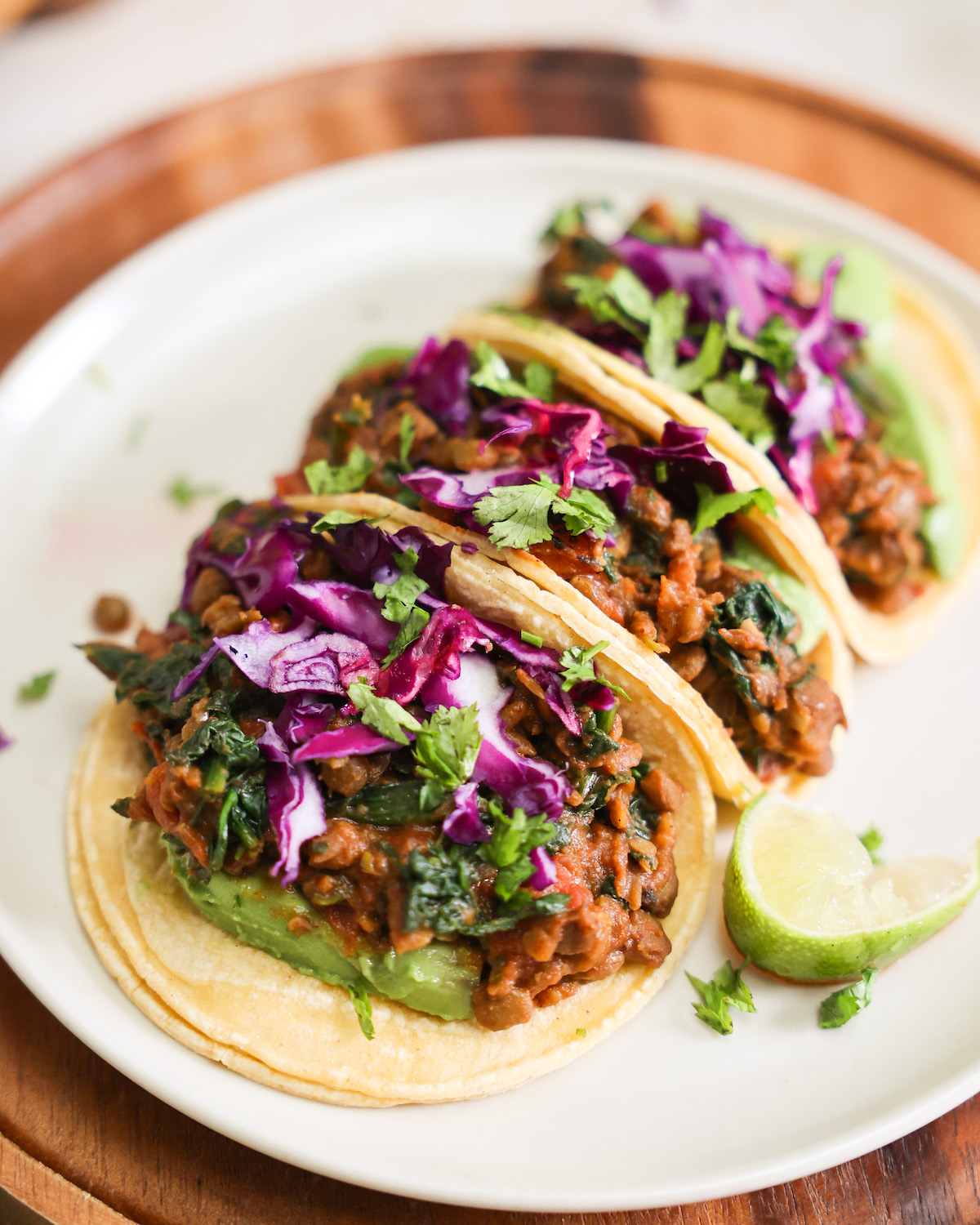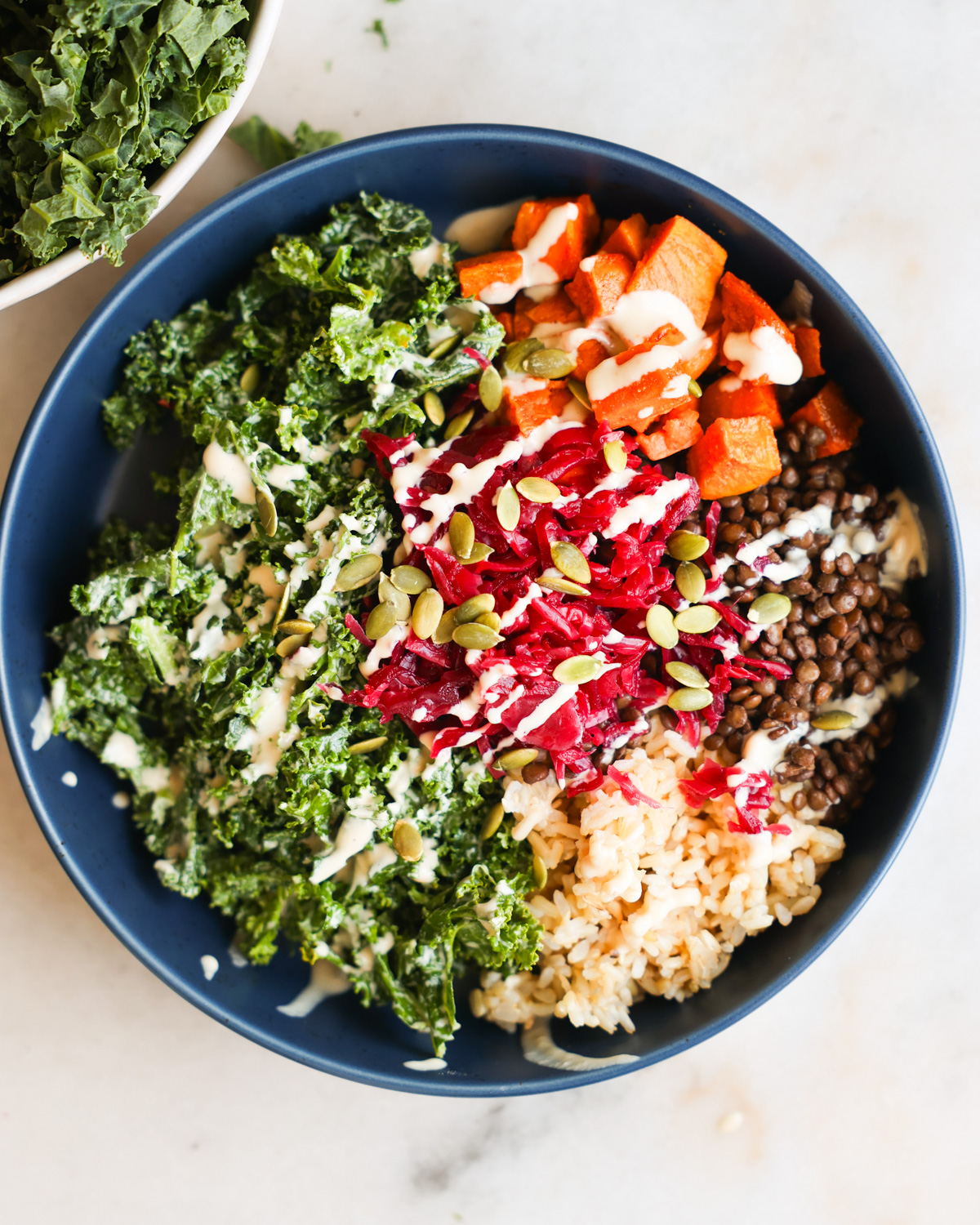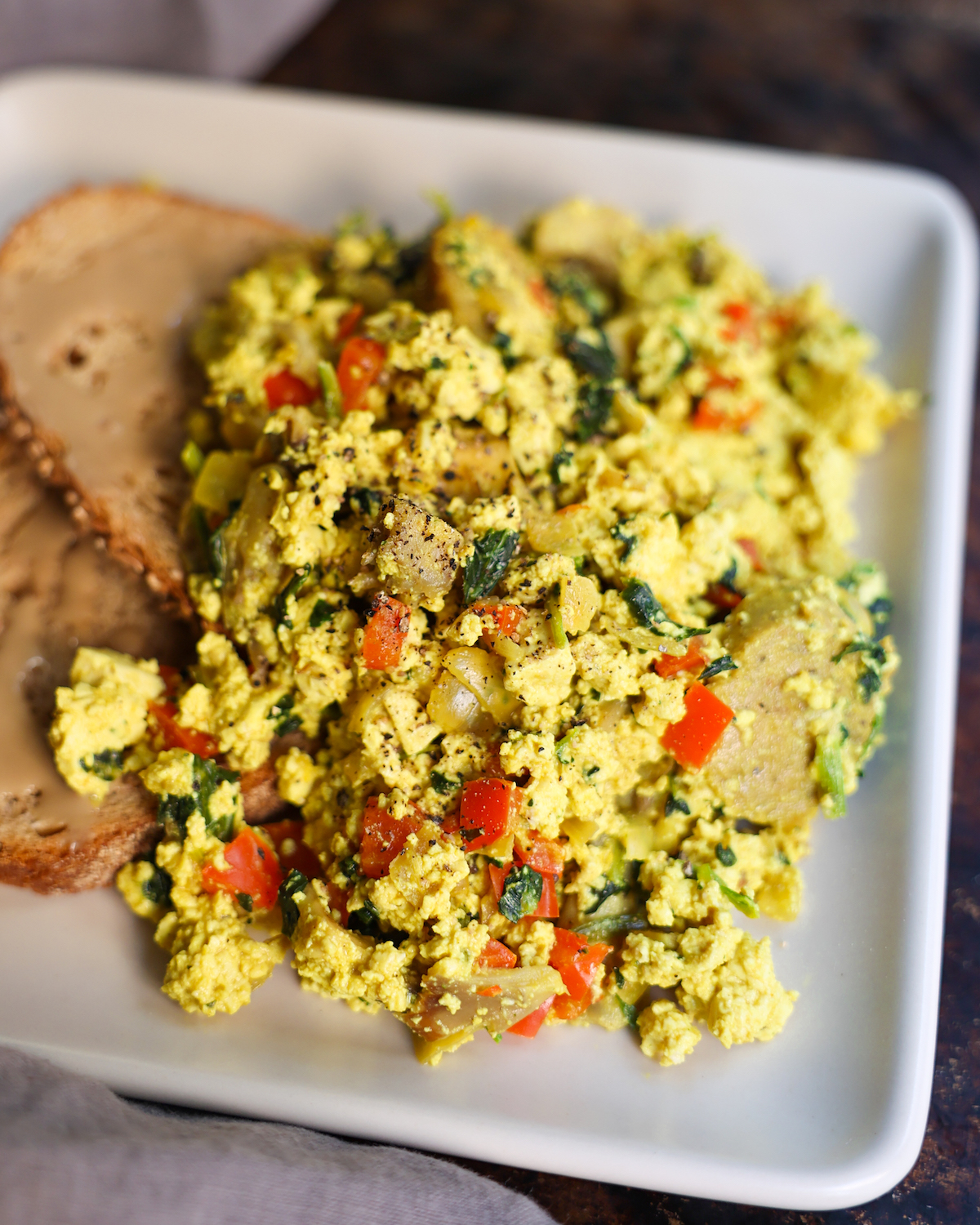Iron plays an essential role in ensuring wellness, but it is also a common nutrient deficiency. Iron is also a hot button issue for vegans because of the lack of animal-based “heme” iron in plant-based foods. Heme iron is easily absorbable versus its non-heme (plant-based) counterpart. But luckily there are plenty of vegan iron rich foods, plus delicious ways to improve your body’s ability to absorb iron.

Why do we need iron?
Iron is a mineral and essential element in the production of hemoglobin, an erythrocyte, or red blood cell, that transfers oxygen from the lungs to the tissues. A lack of iron in the diet can lead to iron deficiency anemia (IDA), categorized by tiredness, shortness of breath, heart palpitations, paler skin, and headaches. It is the most common deficiency in the world, with 30% of the population being affected. Decreased dietary iron is often the culprit of this diagnosis. So, how do you protect yourself from this common condition?
If you suspect you have an iron deficiency
Before we dive into the ways you can consume enough iron with vegan iron rich foods, it is important to note that iron deficiencies should be diagnosed by a doctor. This blog post is meant to provide inspiration, not serve as medical advice. Please speak to your doctor if you know or suspect you may have an iron deficiency.
Heme vs Non-Heme Iron
Dietary iron is found in two forms: heme and non-heme. Heme iron is easily absorbable at 15-35%. It is found in meat, fish, and poultry. Non-heme iron is found in plant foods and has a diminished absorption rate of 2-20%. Certain compounds found in plants (phytates, oxalates, polyphenols, and tannins) even further reduce the rate of non-heme absorption. Coffee and tea, which have high levels of polyphenols and tannins, should especially be avoided during mealtimes to reduce the risk of limited iron absorption. Conversely, ascorbic acid, or vitamin C, facilitates iron absorption.
With a little thought, a careful combination of foods can reduce the risk of anemia. Vegans are no more likely to be diagnosed with IDA than any other population. Some believe this is because vegans eat plenty of common plant-based foods that are naturally rich in both vitamin C and iron. Foods like potatoes, tomatoes, and leafy greens. Also, there is no risk of eating too much iron on a plant-based diet, because unlike heme-iron, the body will filter non-heme iron naturally to limit absorption.
How much iron do vegans need?
The recommended dietary allowance (RDA) for iron is 15-18mg per day for women. It is lower for men and the elderly, and higher for pregnant women. However, if you are committed to a plant-based lifestyle, the RDA is higher to account for this reduced absorption rate. Plan for 14-32mg of iron every day. It’s not as hard as you think, and you may find many of the foods mentioned below are commonplace in your daily diet.

Eat these Vegan Iron Rich Foods
Legumes
Prioritizing beans, lentils, tofu, and peas in your diet can quickly boost your iron levels. Soybeans, for instance, have 9.9mg per raw cup. Snack on a cup of edamame or add a scoop to your salads and bowls. Lentils have 6.6mg per cooked cup. Try a hearty bowl of lentil soup at lunch to boost iron intake. Or make a pot of comforting Red Beans & Rice. Kidney beans contain 5.2mg of iron per cup!
Seeds & Nuts
Snacks like pine nuts, almonds and cashews provide anywhere from 5-8mg of non-heme iron per cup. Flaxseeds (9.6mg per cup), pumpkin seeds (11.6mg per cup), and sesame seeds (21mg per cup) are three easy additions to any meal. Add a few tablespoons of ground flaxseeds to your smoothie or oatmeal, coat your tofu in crunchy sesame seeds, or make iron rich cookies using tahini. Sprinkle roasted pumpkin seeds or nuts onto your grains, salads, and soups for a tasty and nutritious boost.
Vegetables
Dark-leafy greens, dried tomatoes, and potatoes with skin are all excellent, iron-rich foods. Don’t be afraid of cooking with tomato paste, digging into a crispy baked potato, and piling broccoli, chard, Brussel’s sprouts, and spinach on your plate. Remember that the absorbability of the iron in these foods is limited, so pair with a vitamin C rich food to increase availability (like bell peppers, citrus fruits, and sweet potatoes).
Dried Fruits
Because dried fruit contains much less water, the iron is concentrated. Prunes, apricots, and even raisins not only provide relief from constipation with their high fiber content, but they also supply 4-8mg of iron per cup. Add dried fruit to breakfast porridge or snack on them with nuts.
Whole Grains
To increase iron in your diet, prioritize whole grains over refined grains. For example, brown rice over white rice. The latter has been stripped of its germ and many nutrients, including iron. Whole grains like brown rice, quinoa, oats, spelt, and farro contain 2-5mg iron per cooked cup. One of my favorite vegan iron rich foods is teff. Teff is a nutty-tasting grain native to East Africa. Just 1/4 cup of raw teff contains 4mg of iron. You may be familiar with injera, the soft flatbread served with Ethiopian food. But teff can also be used to make a delicious and filling breakfast porridge, and teff flour can be added to pancakes and baked goods.

How to improve iron absorption?
Pair vitamin C rich foods with iron
Many iron rich plants are also high in vitamin C, making it easier to get both nutrients at the same time. Examples include broccoli, kale, potatoes, and Brussel’s sprouts. Another way to boost iron absorption is to snack on iron rich nuts along with vitamin C rich fruits like oranges, kiwi, and berries throughout the day. And don’t forget about savory vitamin C rich foods like sweet potatoes, sweet peppers, bell peppers, and cauliflower.
Separate coffee and tea from meals
Coffee and black tea contain natural chemicals which inhibit the absorption of non-heme iron in some people with iron deficiency. If you know you have an iron deficiency, try eating a breakfast rich in iron 1-2 hours before enjoying your morning coffee. Additionally you could separate your afternoon tea from your higher iron snacks, like nuts and seeds.
Increase soaked, sprouted and fermented foods
When you soak, sprout, or ferment foods, it decreases the level of phytates, an iron-inhibiting compound, in these foods. Soak and thoroughly cook beans, choose sprouted grains like Ezekiel bread, and add sides like kimchi and sauerkraut to your meals.
Prioritize lysine rich foods
Legumes and soy-based foods contain the essential amino acid, lysine. Not only does lysine promote collagen growth in the body, but it also enhances iron uptake from the intestine into the blood.
Cast iron skillet for iron deficiency
Preparing meals in a cast iron skillet transfers a small amount of iron into your meals. A newer, less seasoned pan has a higher rate of absorption. Increased cooking and stirring times will elevate iron transfer.

Vegan Iron Sample Day of Eating
Breakfast
Tofu scramble – 9.45mg iron
- 1 cup tofu (250g) or 3.75mg iron
- 1 cup cooked spinach or 5.7mg iron
- 1 orange to increase absorption
Snack
¼ cup dried pumpkin seeds or 2.85mg iron
Lunch
Veggie bowl – 11.8mg iron
- ½ cup edamame or 5mg iron
- 1 cup quinoa or 2.8mg iron
- 1 cup cooked broccoli or 1mg iron
- 1 cup baked sweet potato or 1.7mg iron
- 2 tbsp tahini or 1.3 mg iron
- 1 bell pepper to increase absorption
Snack
¼ cup almonds or 1.3mg iron
1 cup strawberries to increase absorption
Dinner
Lentil soup w/ sauerkraut – 8.4mg iron
- 1 cup soaked lentils in 2.5 cups lentil soup or 6.6mg iron
- 1 cup brown rice or 0.8mg iron
- ½ cup sauerkraut or 1mg iron
Dessert
1 oz dark chocolate or 3.4mg iron
Total non-heme iron: 33.8mg (absorption rate of 2-20%, made more effective by the addition of vitamin C rich foods)
The Takeaway
- Aim for 14-32mg non-heme iron daily.
- Increase absorption by pairing iron rich foods with vegetables and fruits rich in vitamin C
- Avoid drinking coffee and tea with meals if you have an iron deficiency.
Have questions or comments? Please leave a message in the comment section below to get the conversation started.
